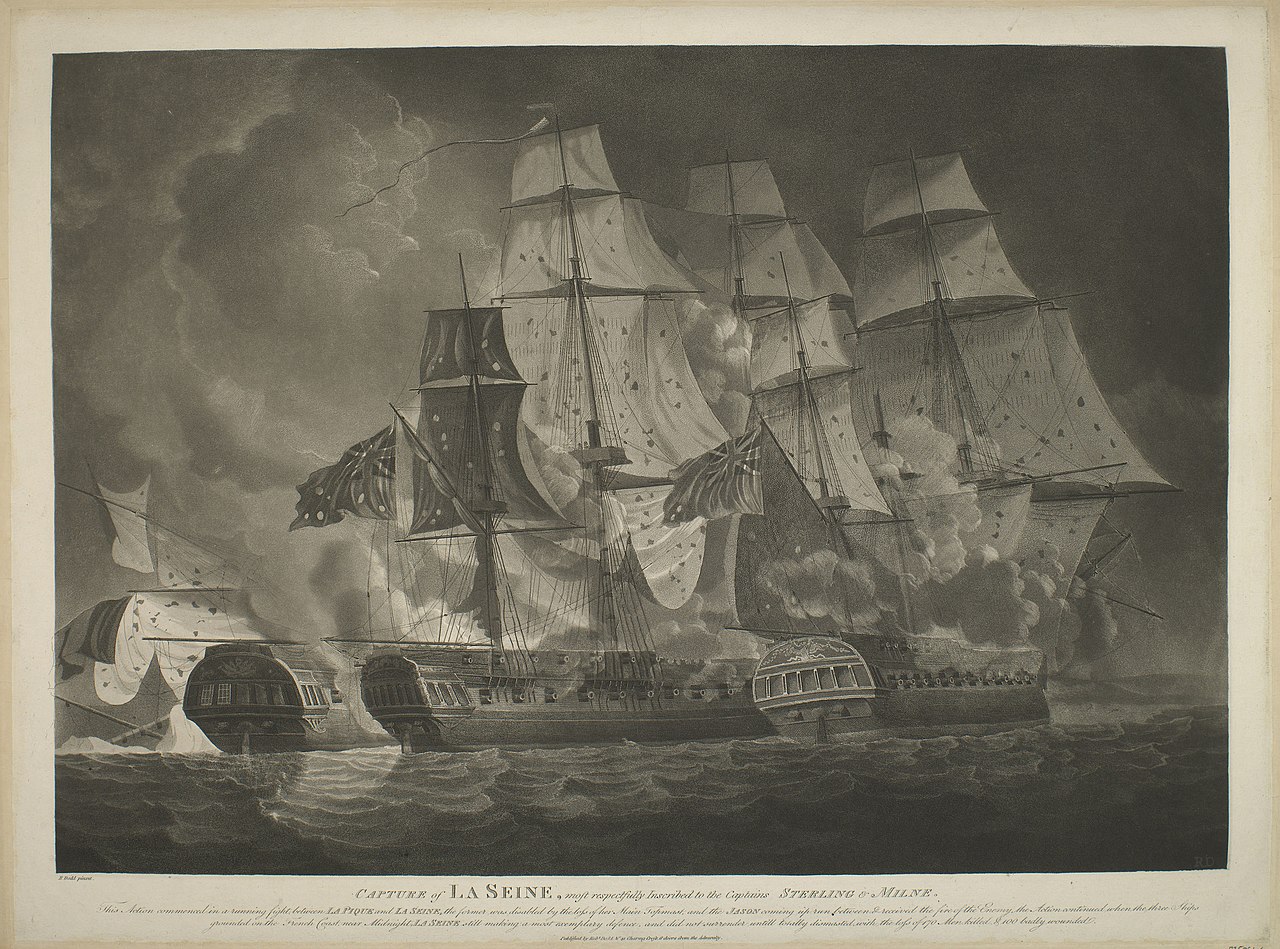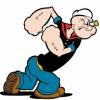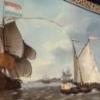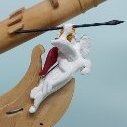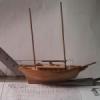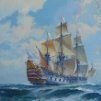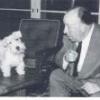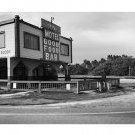-
Posts
2,245 -
Joined
-
Last visited
Reputation Activity
-
 Beef Wellington got a reaction from jwvolz in Benjamin W Latham by jwvolz - FINISHED - Model Shipways - 1:48
Beef Wellington got a reaction from jwvolz in Benjamin W Latham by jwvolz - FINISHED - Model Shipways - 1:48
Joe, I'm ashamed to say I've only just seen your build here. You are doing an outstanding job, and your rigging looks fantastic. Taking the time to serve all those lines is definitely worth it, and something that is maybe possible (and remain sane) on a ship with less rigging than the typical man o' war.
-
 Beef Wellington reacted to Landlubber Mike in Soleil Royal by Hubac's Historian - Heller - An Extensive Modification and Partial Scratch-Build
Beef Wellington reacted to Landlubber Mike in Soleil Royal by Hubac's Historian - Heller - An Extensive Modification and Partial Scratch-Build
Great job! I hereby nominate your log as the most epic on MSW
-
 Beef Wellington got a reaction from BobG in Benjamin W Latham by jwvolz - FINISHED - Model Shipways - 1:48
Beef Wellington got a reaction from BobG in Benjamin W Latham by jwvolz - FINISHED - Model Shipways - 1:48
Joe, I'm ashamed to say I've only just seen your build here. You are doing an outstanding job, and your rigging looks fantastic. Taking the time to serve all those lines is definitely worth it, and something that is maybe possible (and remain sane) on a ship with less rigging than the typical man o' war.
-
 Beef Wellington reacted to grsjax in Paint or blackening
Beef Wellington reacted to grsjax in Paint or blackening
Blacken and then paint. I find that blackened brass holds paint better.
-
 Beef Wellington got a reaction from Blue Ensign in HMS Snake by Beef Wellington - FINISHED - Caldercraft - Scale 1: 64 - First wooden ship build
Beef Wellington got a reaction from Blue Ensign in HMS Snake by Beef Wellington - FINISHED - Caldercraft - Scale 1: 64 - First wooden ship build
@ Eammon - I think you and many others deserve a perseverance award for sticking around
@ Sjors - Its great that you'll be starting a Snake build as well, there are a number now in progress, and there is still a chance you will finish yours before me 🙂
@ Mike - Thanks for reminding me that you put these on your badger, she really is a nice looking model
@ Martin - Hope it helps, like always, we stand on the shoulders of those who go before
The Ensign:
Really the only missing item at this point is an ensign. Making one's own is really the only option as aftermarket items are the wrong time period (the cross of St Patrick in the Union Jack was only introduced after the Act of Union in 1801), only white ensigns are available and they seem somehow a little too perfect, and the material they are made from seems overly heavy. There seem to be a couple of very similar approaches to making these, and here is how I approached it. This was my first effort, and although results are not the height of perfection, I'd say this is something that any modeler should feel comfortable taking on. I am not quite finished in that the final article needs to be 'folded' to sit more realistically, but I'm stepping back for a moment to think through options as I'll probably need to use some steam to help make permanent - and this seems like it could be a little catastrophic if approached incorrectly. Open to thoughts here!
The first decision was to decide what sized ensign to create. I printed on paper various sizes to see what looked good to my eye before committing further. I'm rather taken with the majestic look of a large flag, and have erred on the side of larger size, even if it would be perhaps more appropriate to use a smaller size for a ship not under sail or in battle. If I could make one recommendation to a modern navy, it would be to use larger ensigns! The other factor that played into my decision to err on the larger side was that when tweaked to hang more realistically, it will look smaller and less obtrusive to the eye.
The first step was to soak some modelspan tissue in water and stretch over a frame to dry. I used an old cheap picture frame which worked quite handily, and the modelspan tightened quite nicely. Once dry, dilute PVA was painted on, this causes the paper to stretch and wrinkle again. Once dry, it becomes taught again and the outline of an ensign was very lightly drawn on with pencil tracing from an appropriate pattern. After that it was a simple case of slowly layering dilute acrylic paints. I was somewhat limited to what I could get my hands on, using Tamiya XF-7 Red, XF-8 Blue and Vallejo 'Off White' used on the cutter.
Some masking tape was used where the hoist will be to try and limit mistakes in that area, and while this did work, masking tape did not seem to be able to provide a clean edge for the rest of the flag so it was pretty much all painted free hand. Both sides were painted, and for the field of the flag, brush direction was alternated in horizontal and vertical directions.
I forget how many dilute coats were applied, but I stopped before the colour became too solid and while there was still some translucency when held up to light (the horizontal and vertical lines were still somewhat visible). Once removed and cut to size, the hoist was trimmed to an appropriate size so it could be doubled back on itself and hard crease introduced. This is just visible below at bottom left of the flag.
In reality, the ensign would have been attached with either toggles or loops to the halyard, I decided to avoid reproducing this exactly because it would likely look a little out of scale and introduce some unnecessary complexity. In the end, a length of rope was lightly glued into the crease of the hoist, which was then then lightly glued back into place. Two knots were then placed into the rope where this would normally attach, and a false seizing placed above (on the top) and below (on the bottom) to give the impression of a loop. The hoist was then tidied up with a little off-white paint.
The ensign could now be trial fitted by threading the halyard through the small block on the end of the gaff. An ensign staff would have been used on larger ships, and even some earlier smaller craft seem to have a temporary mount to be able to place a staff. With the platform, there is really no space for such a feature, so I'm going to proceed with the ensign flying from the gaff. Given the spartan, utilitarian approach to the rest of the ship design, it does not seam unreasonable that this was the approach taken, similar to what I understand was done for smaller cutters. I'm also proceeding on the assumption that the ensign halyard would just have been secured to a cleat on either the side of the stern. I would welcome some additional insight or correction on this point.
-
 Beef Wellington got a reaction from md1400cs in HMS Snake by Beef Wellington - FINISHED - Caldercraft - Scale 1: 64 - First wooden ship build
Beef Wellington got a reaction from md1400cs in HMS Snake by Beef Wellington - FINISHED - Caldercraft - Scale 1: 64 - First wooden ship build
@ Eammon - I think you and many others deserve a perseverance award for sticking around
@ Sjors - Its great that you'll be starting a Snake build as well, there are a number now in progress, and there is still a chance you will finish yours before me 🙂
@ Mike - Thanks for reminding me that you put these on your badger, she really is a nice looking model
@ Martin - Hope it helps, like always, we stand on the shoulders of those who go before
The Ensign:
Really the only missing item at this point is an ensign. Making one's own is really the only option as aftermarket items are the wrong time period (the cross of St Patrick in the Union Jack was only introduced after the Act of Union in 1801), only white ensigns are available and they seem somehow a little too perfect, and the material they are made from seems overly heavy. There seem to be a couple of very similar approaches to making these, and here is how I approached it. This was my first effort, and although results are not the height of perfection, I'd say this is something that any modeler should feel comfortable taking on. I am not quite finished in that the final article needs to be 'folded' to sit more realistically, but I'm stepping back for a moment to think through options as I'll probably need to use some steam to help make permanent - and this seems like it could be a little catastrophic if approached incorrectly. Open to thoughts here!
The first decision was to decide what sized ensign to create. I printed on paper various sizes to see what looked good to my eye before committing further. I'm rather taken with the majestic look of a large flag, and have erred on the side of larger size, even if it would be perhaps more appropriate to use a smaller size for a ship not under sail or in battle. If I could make one recommendation to a modern navy, it would be to use larger ensigns! The other factor that played into my decision to err on the larger side was that when tweaked to hang more realistically, it will look smaller and less obtrusive to the eye.
The first step was to soak some modelspan tissue in water and stretch over a frame to dry. I used an old cheap picture frame which worked quite handily, and the modelspan tightened quite nicely. Once dry, dilute PVA was painted on, this causes the paper to stretch and wrinkle again. Once dry, it becomes taught again and the outline of an ensign was very lightly drawn on with pencil tracing from an appropriate pattern. After that it was a simple case of slowly layering dilute acrylic paints. I was somewhat limited to what I could get my hands on, using Tamiya XF-7 Red, XF-8 Blue and Vallejo 'Off White' used on the cutter.
Some masking tape was used where the hoist will be to try and limit mistakes in that area, and while this did work, masking tape did not seem to be able to provide a clean edge for the rest of the flag so it was pretty much all painted free hand. Both sides were painted, and for the field of the flag, brush direction was alternated in horizontal and vertical directions.
I forget how many dilute coats were applied, but I stopped before the colour became too solid and while there was still some translucency when held up to light (the horizontal and vertical lines were still somewhat visible). Once removed and cut to size, the hoist was trimmed to an appropriate size so it could be doubled back on itself and hard crease introduced. This is just visible below at bottom left of the flag.
In reality, the ensign would have been attached with either toggles or loops to the halyard, I decided to avoid reproducing this exactly because it would likely look a little out of scale and introduce some unnecessary complexity. In the end, a length of rope was lightly glued into the crease of the hoist, which was then then lightly glued back into place. Two knots were then placed into the rope where this would normally attach, and a false seizing placed above (on the top) and below (on the bottom) to give the impression of a loop. The hoist was then tidied up with a little off-white paint.
The ensign could now be trial fitted by threading the halyard through the small block on the end of the gaff. An ensign staff would have been used on larger ships, and even some earlier smaller craft seem to have a temporary mount to be able to place a staff. With the platform, there is really no space for such a feature, so I'm going to proceed with the ensign flying from the gaff. Given the spartan, utilitarian approach to the rest of the ship design, it does not seam unreasonable that this was the approach taken, similar to what I understand was done for smaller cutters. I'm also proceeding on the assumption that the ensign halyard would just have been secured to a cleat on either the side of the stern. I would welcome some additional insight or correction on this point.
-
 Beef Wellington got a reaction from popeye the sailor in HMS Snake 1797 by Sjors - FINISHED - Caldercraft - Scale 1:64
Beef Wellington got a reaction from popeye the sailor in HMS Snake 1797 by Sjors - FINISHED - Caldercraft - Scale 1:64
You know I'll be following closely Sjors, I'm sure you'll have fun with this.
-
 Beef Wellington reacted to Sjors in HMS Snake 1797 by Sjors - FINISHED - Caldercraft - Scale 1:64
Beef Wellington reacted to Sjors in HMS Snake 1797 by Sjors - FINISHED - Caldercraft - Scale 1:64
First update 🙂
Cut the frames and false keel part.
Now sanding the connections away.....
Sjors
-
 Beef Wellington got a reaction from p.hoek in HMS Snake by Beef Wellington - FINISHED - Caldercraft - Scale 1: 64 - First wooden ship build
Beef Wellington got a reaction from p.hoek in HMS Snake by Beef Wellington - FINISHED - Caldercraft - Scale 1: 64 - First wooden ship build
@ Eammon - I think you and many others deserve a perseverance award for sticking around
@ Sjors - Its great that you'll be starting a Snake build as well, there are a number now in progress, and there is still a chance you will finish yours before me 🙂
@ Mike - Thanks for reminding me that you put these on your badger, she really is a nice looking model
@ Martin - Hope it helps, like always, we stand on the shoulders of those who go before
The Ensign:
Really the only missing item at this point is an ensign. Making one's own is really the only option as aftermarket items are the wrong time period (the cross of St Patrick in the Union Jack was only introduced after the Act of Union in 1801), only white ensigns are available and they seem somehow a little too perfect, and the material they are made from seems overly heavy. There seem to be a couple of very similar approaches to making these, and here is how I approached it. This was my first effort, and although results are not the height of perfection, I'd say this is something that any modeler should feel comfortable taking on. I am not quite finished in that the final article needs to be 'folded' to sit more realistically, but I'm stepping back for a moment to think through options as I'll probably need to use some steam to help make permanent - and this seems like it could be a little catastrophic if approached incorrectly. Open to thoughts here!
The first decision was to decide what sized ensign to create. I printed on paper various sizes to see what looked good to my eye before committing further. I'm rather taken with the majestic look of a large flag, and have erred on the side of larger size, even if it would be perhaps more appropriate to use a smaller size for a ship not under sail or in battle. If I could make one recommendation to a modern navy, it would be to use larger ensigns! The other factor that played into my decision to err on the larger side was that when tweaked to hang more realistically, it will look smaller and less obtrusive to the eye.
The first step was to soak some modelspan tissue in water and stretch over a frame to dry. I used an old cheap picture frame which worked quite handily, and the modelspan tightened quite nicely. Once dry, dilute PVA was painted on, this causes the paper to stretch and wrinkle again. Once dry, it becomes taught again and the outline of an ensign was very lightly drawn on with pencil tracing from an appropriate pattern. After that it was a simple case of slowly layering dilute acrylic paints. I was somewhat limited to what I could get my hands on, using Tamiya XF-7 Red, XF-8 Blue and Vallejo 'Off White' used on the cutter.
Some masking tape was used where the hoist will be to try and limit mistakes in that area, and while this did work, masking tape did not seem to be able to provide a clean edge for the rest of the flag so it was pretty much all painted free hand. Both sides were painted, and for the field of the flag, brush direction was alternated in horizontal and vertical directions.
I forget how many dilute coats were applied, but I stopped before the colour became too solid and while there was still some translucency when held up to light (the horizontal and vertical lines were still somewhat visible). Once removed and cut to size, the hoist was trimmed to an appropriate size so it could be doubled back on itself and hard crease introduced. This is just visible below at bottom left of the flag.
In reality, the ensign would have been attached with either toggles or loops to the halyard, I decided to avoid reproducing this exactly because it would likely look a little out of scale and introduce some unnecessary complexity. In the end, a length of rope was lightly glued into the crease of the hoist, which was then then lightly glued back into place. Two knots were then placed into the rope where this would normally attach, and a false seizing placed above (on the top) and below (on the bottom) to give the impression of a loop. The hoist was then tidied up with a little off-white paint.
The ensign could now be trial fitted by threading the halyard through the small block on the end of the gaff. An ensign staff would have been used on larger ships, and even some earlier smaller craft seem to have a temporary mount to be able to place a staff. With the platform, there is really no space for such a feature, so I'm going to proceed with the ensign flying from the gaff. Given the spartan, utilitarian approach to the rest of the ship design, it does not seam unreasonable that this was the approach taken, similar to what I understand was done for smaller cutters. I'm also proceeding on the assumption that the ensign halyard would just have been secured to a cleat on either the side of the stern. I would welcome some additional insight or correction on this point.
-
 Beef Wellington got a reaction from AON in HMS Snake by Beef Wellington - FINISHED - Caldercraft - Scale 1: 64 - First wooden ship build
Beef Wellington got a reaction from AON in HMS Snake by Beef Wellington - FINISHED - Caldercraft - Scale 1: 64 - First wooden ship build
@ Eammon - I think you and many others deserve a perseverance award for sticking around
@ Sjors - Its great that you'll be starting a Snake build as well, there are a number now in progress, and there is still a chance you will finish yours before me 🙂
@ Mike - Thanks for reminding me that you put these on your badger, she really is a nice looking model
@ Martin - Hope it helps, like always, we stand on the shoulders of those who go before
The Ensign:
Really the only missing item at this point is an ensign. Making one's own is really the only option as aftermarket items are the wrong time period (the cross of St Patrick in the Union Jack was only introduced after the Act of Union in 1801), only white ensigns are available and they seem somehow a little too perfect, and the material they are made from seems overly heavy. There seem to be a couple of very similar approaches to making these, and here is how I approached it. This was my first effort, and although results are not the height of perfection, I'd say this is something that any modeler should feel comfortable taking on. I am not quite finished in that the final article needs to be 'folded' to sit more realistically, but I'm stepping back for a moment to think through options as I'll probably need to use some steam to help make permanent - and this seems like it could be a little catastrophic if approached incorrectly. Open to thoughts here!
The first decision was to decide what sized ensign to create. I printed on paper various sizes to see what looked good to my eye before committing further. I'm rather taken with the majestic look of a large flag, and have erred on the side of larger size, even if it would be perhaps more appropriate to use a smaller size for a ship not under sail or in battle. If I could make one recommendation to a modern navy, it would be to use larger ensigns! The other factor that played into my decision to err on the larger side was that when tweaked to hang more realistically, it will look smaller and less obtrusive to the eye.
The first step was to soak some modelspan tissue in water and stretch over a frame to dry. I used an old cheap picture frame which worked quite handily, and the modelspan tightened quite nicely. Once dry, dilute PVA was painted on, this causes the paper to stretch and wrinkle again. Once dry, it becomes taught again and the outline of an ensign was very lightly drawn on with pencil tracing from an appropriate pattern. After that it was a simple case of slowly layering dilute acrylic paints. I was somewhat limited to what I could get my hands on, using Tamiya XF-7 Red, XF-8 Blue and Vallejo 'Off White' used on the cutter.
Some masking tape was used where the hoist will be to try and limit mistakes in that area, and while this did work, masking tape did not seem to be able to provide a clean edge for the rest of the flag so it was pretty much all painted free hand. Both sides were painted, and for the field of the flag, brush direction was alternated in horizontal and vertical directions.
I forget how many dilute coats were applied, but I stopped before the colour became too solid and while there was still some translucency when held up to light (the horizontal and vertical lines were still somewhat visible). Once removed and cut to size, the hoist was trimmed to an appropriate size so it could be doubled back on itself and hard crease introduced. This is just visible below at bottom left of the flag.
In reality, the ensign would have been attached with either toggles or loops to the halyard, I decided to avoid reproducing this exactly because it would likely look a little out of scale and introduce some unnecessary complexity. In the end, a length of rope was lightly glued into the crease of the hoist, which was then then lightly glued back into place. Two knots were then placed into the rope where this would normally attach, and a false seizing placed above (on the top) and below (on the bottom) to give the impression of a loop. The hoist was then tidied up with a little off-white paint.
The ensign could now be trial fitted by threading the halyard through the small block on the end of the gaff. An ensign staff would have been used on larger ships, and even some earlier smaller craft seem to have a temporary mount to be able to place a staff. With the platform, there is really no space for such a feature, so I'm going to proceed with the ensign flying from the gaff. Given the spartan, utilitarian approach to the rest of the ship design, it does not seam unreasonable that this was the approach taken, similar to what I understand was done for smaller cutters. I'm also proceeding on the assumption that the ensign halyard would just have been secured to a cleat on either the side of the stern. I would welcome some additional insight or correction on this point.
-
 Beef Wellington got a reaction from cog in HMS Snake by Beef Wellington - FINISHED - Caldercraft - Scale 1: 64 - First wooden ship build
Beef Wellington got a reaction from cog in HMS Snake by Beef Wellington - FINISHED - Caldercraft - Scale 1: 64 - First wooden ship build
@ Eammon - I think you and many others deserve a perseverance award for sticking around
@ Sjors - Its great that you'll be starting a Snake build as well, there are a number now in progress, and there is still a chance you will finish yours before me 🙂
@ Mike - Thanks for reminding me that you put these on your badger, she really is a nice looking model
@ Martin - Hope it helps, like always, we stand on the shoulders of those who go before
The Ensign:
Really the only missing item at this point is an ensign. Making one's own is really the only option as aftermarket items are the wrong time period (the cross of St Patrick in the Union Jack was only introduced after the Act of Union in 1801), only white ensigns are available and they seem somehow a little too perfect, and the material they are made from seems overly heavy. There seem to be a couple of very similar approaches to making these, and here is how I approached it. This was my first effort, and although results are not the height of perfection, I'd say this is something that any modeler should feel comfortable taking on. I am not quite finished in that the final article needs to be 'folded' to sit more realistically, but I'm stepping back for a moment to think through options as I'll probably need to use some steam to help make permanent - and this seems like it could be a little catastrophic if approached incorrectly. Open to thoughts here!
The first decision was to decide what sized ensign to create. I printed on paper various sizes to see what looked good to my eye before committing further. I'm rather taken with the majestic look of a large flag, and have erred on the side of larger size, even if it would be perhaps more appropriate to use a smaller size for a ship not under sail or in battle. If I could make one recommendation to a modern navy, it would be to use larger ensigns! The other factor that played into my decision to err on the larger side was that when tweaked to hang more realistically, it will look smaller and less obtrusive to the eye.
The first step was to soak some modelspan tissue in water and stretch over a frame to dry. I used an old cheap picture frame which worked quite handily, and the modelspan tightened quite nicely. Once dry, dilute PVA was painted on, this causes the paper to stretch and wrinkle again. Once dry, it becomes taught again and the outline of an ensign was very lightly drawn on with pencil tracing from an appropriate pattern. After that it was a simple case of slowly layering dilute acrylic paints. I was somewhat limited to what I could get my hands on, using Tamiya XF-7 Red, XF-8 Blue and Vallejo 'Off White' used on the cutter.
Some masking tape was used where the hoist will be to try and limit mistakes in that area, and while this did work, masking tape did not seem to be able to provide a clean edge for the rest of the flag so it was pretty much all painted free hand. Both sides were painted, and for the field of the flag, brush direction was alternated in horizontal and vertical directions.
I forget how many dilute coats were applied, but I stopped before the colour became too solid and while there was still some translucency when held up to light (the horizontal and vertical lines were still somewhat visible). Once removed and cut to size, the hoist was trimmed to an appropriate size so it could be doubled back on itself and hard crease introduced. This is just visible below at bottom left of the flag.
In reality, the ensign would have been attached with either toggles or loops to the halyard, I decided to avoid reproducing this exactly because it would likely look a little out of scale and introduce some unnecessary complexity. In the end, a length of rope was lightly glued into the crease of the hoist, which was then then lightly glued back into place. Two knots were then placed into the rope where this would normally attach, and a false seizing placed above (on the top) and below (on the bottom) to give the impression of a loop. The hoist was then tidied up with a little off-white paint.
The ensign could now be trial fitted by threading the halyard through the small block on the end of the gaff. An ensign staff would have been used on larger ships, and even some earlier smaller craft seem to have a temporary mount to be able to place a staff. With the platform, there is really no space for such a feature, so I'm going to proceed with the ensign flying from the gaff. Given the spartan, utilitarian approach to the rest of the ship design, it does not seam unreasonable that this was the approach taken, similar to what I understand was done for smaller cutters. I'm also proceeding on the assumption that the ensign halyard would just have been secured to a cleat on either the side of the stern. I would welcome some additional insight or correction on this point.
-
 Beef Wellington got a reaction from drtrap in HMS Snake by Beef Wellington - FINISHED - Caldercraft - Scale 1: 64 - First wooden ship build
Beef Wellington got a reaction from drtrap in HMS Snake by Beef Wellington - FINISHED - Caldercraft - Scale 1: 64 - First wooden ship build
Michael - welcome aboard and thanks to you and the others for the interest.
Nun-Buoys:
I've been trying to get my head around these for some time, there seems to be little info on these in sources but seeing how others have tackled these (esp. BE and Chuck) were of great help. I seem to recall that the buoys should be around 1/3 to 1/4 the length of the anchor but for the life of me can't find the reference or place that I read that to confirm. The body of the buoy was shaped from some spare dowel, and 2 ringbolts inserted at the extremities leaving some of the length exposed. These would have been made from leather and would have been 'served' with leather strips as suggested by Lavery, but this was a detail I ommitted, and these were simply painted with brown and black paint. In a slightly larger size, these would be fun items to add a little more detail on (as I think BE did on his on his Pegasus build)
To make up the anchor buoy slings, eyes were seized into some rope, and threaded onto the rope that will become the hoops. I wasn't quite sure what size to use, but considering that in practice these would have been wormed, parcelled and served - presumably for protection - it seems likely that they would be reasonably substantial. I used some Syren line to get a little definition, and used a black marker to darken as I only had some tan stuff handy.
Mounting the slings on the buoy itself proved quite the challenge. Firstly, the hoops were made up with a single overhand knot, secured with GS Hypo glue, and then trimmed. The slings on each end need to go underneath the hoop on the opposite end. I found the best method was to suspend in some helping hands to fine tune, although this proved very fiddly.
Once everything was satisfactorily in position, the 4 slings were seized around the ringbolt (which simulates the loop the slings would make), and then trimmed.
This was then attached to a pre-made coil to represent the length of rope needed for given depths of water, and then secured to the shrouds for storage, and attached to the anchor. On many models, these are shown as rather drab items, I have to believe in practice that these would have received some sort of brightly coloured paint to aid visibility, but I stayed with the more conservative muted tones.
So at this point, the only item remaining to be completed is an ensign of some sort, and some tweaking of the rigging...
-
 Beef Wellington got a reaction from egkb in HMS Snake by Beef Wellington - FINISHED - Caldercraft - Scale 1: 64 - First wooden ship build
Beef Wellington got a reaction from egkb in HMS Snake by Beef Wellington - FINISHED - Caldercraft - Scale 1: 64 - First wooden ship build
@ Eammon - I think you and many others deserve a perseverance award for sticking around
@ Sjors - Its great that you'll be starting a Snake build as well, there are a number now in progress, and there is still a chance you will finish yours before me 🙂
@ Mike - Thanks for reminding me that you put these on your badger, she really is a nice looking model
@ Martin - Hope it helps, like always, we stand on the shoulders of those who go before
The Ensign:
Really the only missing item at this point is an ensign. Making one's own is really the only option as aftermarket items are the wrong time period (the cross of St Patrick in the Union Jack was only introduced after the Act of Union in 1801), only white ensigns are available and they seem somehow a little too perfect, and the material they are made from seems overly heavy. There seem to be a couple of very similar approaches to making these, and here is how I approached it. This was my first effort, and although results are not the height of perfection, I'd say this is something that any modeler should feel comfortable taking on. I am not quite finished in that the final article needs to be 'folded' to sit more realistically, but I'm stepping back for a moment to think through options as I'll probably need to use some steam to help make permanent - and this seems like it could be a little catastrophic if approached incorrectly. Open to thoughts here!
The first decision was to decide what sized ensign to create. I printed on paper various sizes to see what looked good to my eye before committing further. I'm rather taken with the majestic look of a large flag, and have erred on the side of larger size, even if it would be perhaps more appropriate to use a smaller size for a ship not under sail or in battle. If I could make one recommendation to a modern navy, it would be to use larger ensigns! The other factor that played into my decision to err on the larger side was that when tweaked to hang more realistically, it will look smaller and less obtrusive to the eye.
The first step was to soak some modelspan tissue in water and stretch over a frame to dry. I used an old cheap picture frame which worked quite handily, and the modelspan tightened quite nicely. Once dry, dilute PVA was painted on, this causes the paper to stretch and wrinkle again. Once dry, it becomes taught again and the outline of an ensign was very lightly drawn on with pencil tracing from an appropriate pattern. After that it was a simple case of slowly layering dilute acrylic paints. I was somewhat limited to what I could get my hands on, using Tamiya XF-7 Red, XF-8 Blue and Vallejo 'Off White' used on the cutter.
Some masking tape was used where the hoist will be to try and limit mistakes in that area, and while this did work, masking tape did not seem to be able to provide a clean edge for the rest of the flag so it was pretty much all painted free hand. Both sides were painted, and for the field of the flag, brush direction was alternated in horizontal and vertical directions.
I forget how many dilute coats were applied, but I stopped before the colour became too solid and while there was still some translucency when held up to light (the horizontal and vertical lines were still somewhat visible). Once removed and cut to size, the hoist was trimmed to an appropriate size so it could be doubled back on itself and hard crease introduced. This is just visible below at bottom left of the flag.
In reality, the ensign would have been attached with either toggles or loops to the halyard, I decided to avoid reproducing this exactly because it would likely look a little out of scale and introduce some unnecessary complexity. In the end, a length of rope was lightly glued into the crease of the hoist, which was then then lightly glued back into place. Two knots were then placed into the rope where this would normally attach, and a false seizing placed above (on the top) and below (on the bottom) to give the impression of a loop. The hoist was then tidied up with a little off-white paint.
The ensign could now be trial fitted by threading the halyard through the small block on the end of the gaff. An ensign staff would have been used on larger ships, and even some earlier smaller craft seem to have a temporary mount to be able to place a staff. With the platform, there is really no space for such a feature, so I'm going to proceed with the ensign flying from the gaff. Given the spartan, utilitarian approach to the rest of the ship design, it does not seam unreasonable that this was the approach taken, similar to what I understand was done for smaller cutters. I'm also proceeding on the assumption that the ensign halyard would just have been secured to a cleat on either the side of the stern. I would welcome some additional insight or correction on this point.
-
 Beef Wellington got a reaction from usedtosail in HMS Snake by Beef Wellington - FINISHED - Caldercraft - Scale 1: 64 - First wooden ship build
Beef Wellington got a reaction from usedtosail in HMS Snake by Beef Wellington - FINISHED - Caldercraft - Scale 1: 64 - First wooden ship build
@ Eammon - I think you and many others deserve a perseverance award for sticking around
@ Sjors - Its great that you'll be starting a Snake build as well, there are a number now in progress, and there is still a chance you will finish yours before me 🙂
@ Mike - Thanks for reminding me that you put these on your badger, she really is a nice looking model
@ Martin - Hope it helps, like always, we stand on the shoulders of those who go before
The Ensign:
Really the only missing item at this point is an ensign. Making one's own is really the only option as aftermarket items are the wrong time period (the cross of St Patrick in the Union Jack was only introduced after the Act of Union in 1801), only white ensigns are available and they seem somehow a little too perfect, and the material they are made from seems overly heavy. There seem to be a couple of very similar approaches to making these, and here is how I approached it. This was my first effort, and although results are not the height of perfection, I'd say this is something that any modeler should feel comfortable taking on. I am not quite finished in that the final article needs to be 'folded' to sit more realistically, but I'm stepping back for a moment to think through options as I'll probably need to use some steam to help make permanent - and this seems like it could be a little catastrophic if approached incorrectly. Open to thoughts here!
The first decision was to decide what sized ensign to create. I printed on paper various sizes to see what looked good to my eye before committing further. I'm rather taken with the majestic look of a large flag, and have erred on the side of larger size, even if it would be perhaps more appropriate to use a smaller size for a ship not under sail or in battle. If I could make one recommendation to a modern navy, it would be to use larger ensigns! The other factor that played into my decision to err on the larger side was that when tweaked to hang more realistically, it will look smaller and less obtrusive to the eye.
The first step was to soak some modelspan tissue in water and stretch over a frame to dry. I used an old cheap picture frame which worked quite handily, and the modelspan tightened quite nicely. Once dry, dilute PVA was painted on, this causes the paper to stretch and wrinkle again. Once dry, it becomes taught again and the outline of an ensign was very lightly drawn on with pencil tracing from an appropriate pattern. After that it was a simple case of slowly layering dilute acrylic paints. I was somewhat limited to what I could get my hands on, using Tamiya XF-7 Red, XF-8 Blue and Vallejo 'Off White' used on the cutter.
Some masking tape was used where the hoist will be to try and limit mistakes in that area, and while this did work, masking tape did not seem to be able to provide a clean edge for the rest of the flag so it was pretty much all painted free hand. Both sides were painted, and for the field of the flag, brush direction was alternated in horizontal and vertical directions.
I forget how many dilute coats were applied, but I stopped before the colour became too solid and while there was still some translucency when held up to light (the horizontal and vertical lines were still somewhat visible). Once removed and cut to size, the hoist was trimmed to an appropriate size so it could be doubled back on itself and hard crease introduced. This is just visible below at bottom left of the flag.
In reality, the ensign would have been attached with either toggles or loops to the halyard, I decided to avoid reproducing this exactly because it would likely look a little out of scale and introduce some unnecessary complexity. In the end, a length of rope was lightly glued into the crease of the hoist, which was then then lightly glued back into place. Two knots were then placed into the rope where this would normally attach, and a false seizing placed above (on the top) and below (on the bottom) to give the impression of a loop. The hoist was then tidied up with a little off-white paint.
The ensign could now be trial fitted by threading the halyard through the small block on the end of the gaff. An ensign staff would have been used on larger ships, and even some earlier smaller craft seem to have a temporary mount to be able to place a staff. With the platform, there is really no space for such a feature, so I'm going to proceed with the ensign flying from the gaff. Given the spartan, utilitarian approach to the rest of the ship design, it does not seam unreasonable that this was the approach taken, similar to what I understand was done for smaller cutters. I'm also proceeding on the assumption that the ensign halyard would just have been secured to a cleat on either the side of the stern. I would welcome some additional insight or correction on this point.
-
 Beef Wellington got a reaction from Bill Morrison in HMS Diana by dunnock - FINISHED - Caldercraft - 1:64
Beef Wellington got a reaction from Bill Morrison in HMS Diana by dunnock - FINISHED - Caldercraft - 1:64
I seem to recall that the black lines are the 'as designed', the red shows 'as built', and the green would show alterations made after the fact. Of of course, how disciplined this update procedure was is unknown. Curious which plan this comes from, looking at the barricades, it looks like it shows a ship pierced for cannons (smaller ports) which would suggest an earlier design. I came to conclusion looking at a number of plans (which would have been drawn at slightly different times for different ships/yards) and considering the changes in approach at the time this class was built (esp. built up vs open bulwarks, adoption of carronades) that there are enough inconsistency to perhaps never know exactly how they looked at a specific time. I think it is also true that some of the plans are mis-labeled, typically identifying ships generally as Diana, when it may be representing the entire Artois class, or a different ship in the same class.
I purchased the profile plan for "Diana" from NMM, which seems to be general for the Artois class. Interestingly, on that plan the mizzen position seems to be closest to that of the 'green' mizzen on yours (which adds to the confusion a little). FWIW, there is a notation on my plan indicating that the position of the foremast on both "Jason" and "Diamond" was moved forward 6 1/4 inches, and this is shown with a green X on the mast center only rather than showing in full.
-
 Beef Wellington got a reaction from Martin W in HMS Snake by Beef Wellington - FINISHED - Caldercraft - Scale 1: 64 - First wooden ship build
Beef Wellington got a reaction from Martin W in HMS Snake by Beef Wellington - FINISHED - Caldercraft - Scale 1: 64 - First wooden ship build
@ Eammon - I think you and many others deserve a perseverance award for sticking around
@ Sjors - Its great that you'll be starting a Snake build as well, there are a number now in progress, and there is still a chance you will finish yours before me 🙂
@ Mike - Thanks for reminding me that you put these on your badger, she really is a nice looking model
@ Martin - Hope it helps, like always, we stand on the shoulders of those who go before
The Ensign:
Really the only missing item at this point is an ensign. Making one's own is really the only option as aftermarket items are the wrong time period (the cross of St Patrick in the Union Jack was only introduced after the Act of Union in 1801), only white ensigns are available and they seem somehow a little too perfect, and the material they are made from seems overly heavy. There seem to be a couple of very similar approaches to making these, and here is how I approached it. This was my first effort, and although results are not the height of perfection, I'd say this is something that any modeler should feel comfortable taking on. I am not quite finished in that the final article needs to be 'folded' to sit more realistically, but I'm stepping back for a moment to think through options as I'll probably need to use some steam to help make permanent - and this seems like it could be a little catastrophic if approached incorrectly. Open to thoughts here!
The first decision was to decide what sized ensign to create. I printed on paper various sizes to see what looked good to my eye before committing further. I'm rather taken with the majestic look of a large flag, and have erred on the side of larger size, even if it would be perhaps more appropriate to use a smaller size for a ship not under sail or in battle. If I could make one recommendation to a modern navy, it would be to use larger ensigns! The other factor that played into my decision to err on the larger side was that when tweaked to hang more realistically, it will look smaller and less obtrusive to the eye.
The first step was to soak some modelspan tissue in water and stretch over a frame to dry. I used an old cheap picture frame which worked quite handily, and the modelspan tightened quite nicely. Once dry, dilute PVA was painted on, this causes the paper to stretch and wrinkle again. Once dry, it becomes taught again and the outline of an ensign was very lightly drawn on with pencil tracing from an appropriate pattern. After that it was a simple case of slowly layering dilute acrylic paints. I was somewhat limited to what I could get my hands on, using Tamiya XF-7 Red, XF-8 Blue and Vallejo 'Off White' used on the cutter.
Some masking tape was used where the hoist will be to try and limit mistakes in that area, and while this did work, masking tape did not seem to be able to provide a clean edge for the rest of the flag so it was pretty much all painted free hand. Both sides were painted, and for the field of the flag, brush direction was alternated in horizontal and vertical directions.
I forget how many dilute coats were applied, but I stopped before the colour became too solid and while there was still some translucency when held up to light (the horizontal and vertical lines were still somewhat visible). Once removed and cut to size, the hoist was trimmed to an appropriate size so it could be doubled back on itself and hard crease introduced. This is just visible below at bottom left of the flag.
In reality, the ensign would have been attached with either toggles or loops to the halyard, I decided to avoid reproducing this exactly because it would likely look a little out of scale and introduce some unnecessary complexity. In the end, a length of rope was lightly glued into the crease of the hoist, which was then then lightly glued back into place. Two knots were then placed into the rope where this would normally attach, and a false seizing placed above (on the top) and below (on the bottom) to give the impression of a loop. The hoist was then tidied up with a little off-white paint.
The ensign could now be trial fitted by threading the halyard through the small block on the end of the gaff. An ensign staff would have been used on larger ships, and even some earlier smaller craft seem to have a temporary mount to be able to place a staff. With the platform, there is really no space for such a feature, so I'm going to proceed with the ensign flying from the gaff. Given the spartan, utilitarian approach to the rest of the ship design, it does not seam unreasonable that this was the approach taken, similar to what I understand was done for smaller cutters. I'm also proceeding on the assumption that the ensign halyard would just have been secured to a cleat on either the side of the stern. I would welcome some additional insight or correction on this point.
-
 Beef Wellington got a reaction from VTHokiEE in HMS Snake by Beef Wellington - FINISHED - Caldercraft - Scale 1: 64 - First wooden ship build
Beef Wellington got a reaction from VTHokiEE in HMS Snake by Beef Wellington - FINISHED - Caldercraft - Scale 1: 64 - First wooden ship build
@ Eammon - I think you and many others deserve a perseverance award for sticking around
@ Sjors - Its great that you'll be starting a Snake build as well, there are a number now in progress, and there is still a chance you will finish yours before me 🙂
@ Mike - Thanks for reminding me that you put these on your badger, she really is a nice looking model
@ Martin - Hope it helps, like always, we stand on the shoulders of those who go before
The Ensign:
Really the only missing item at this point is an ensign. Making one's own is really the only option as aftermarket items are the wrong time period (the cross of St Patrick in the Union Jack was only introduced after the Act of Union in 1801), only white ensigns are available and they seem somehow a little too perfect, and the material they are made from seems overly heavy. There seem to be a couple of very similar approaches to making these, and here is how I approached it. This was my first effort, and although results are not the height of perfection, I'd say this is something that any modeler should feel comfortable taking on. I am not quite finished in that the final article needs to be 'folded' to sit more realistically, but I'm stepping back for a moment to think through options as I'll probably need to use some steam to help make permanent - and this seems like it could be a little catastrophic if approached incorrectly. Open to thoughts here!
The first decision was to decide what sized ensign to create. I printed on paper various sizes to see what looked good to my eye before committing further. I'm rather taken with the majestic look of a large flag, and have erred on the side of larger size, even if it would be perhaps more appropriate to use a smaller size for a ship not under sail or in battle. If I could make one recommendation to a modern navy, it would be to use larger ensigns! The other factor that played into my decision to err on the larger side was that when tweaked to hang more realistically, it will look smaller and less obtrusive to the eye.
The first step was to soak some modelspan tissue in water and stretch over a frame to dry. I used an old cheap picture frame which worked quite handily, and the modelspan tightened quite nicely. Once dry, dilute PVA was painted on, this causes the paper to stretch and wrinkle again. Once dry, it becomes taught again and the outline of an ensign was very lightly drawn on with pencil tracing from an appropriate pattern. After that it was a simple case of slowly layering dilute acrylic paints. I was somewhat limited to what I could get my hands on, using Tamiya XF-7 Red, XF-8 Blue and Vallejo 'Off White' used on the cutter.
Some masking tape was used where the hoist will be to try and limit mistakes in that area, and while this did work, masking tape did not seem to be able to provide a clean edge for the rest of the flag so it was pretty much all painted free hand. Both sides were painted, and for the field of the flag, brush direction was alternated in horizontal and vertical directions.
I forget how many dilute coats were applied, but I stopped before the colour became too solid and while there was still some translucency when held up to light (the horizontal and vertical lines were still somewhat visible). Once removed and cut to size, the hoist was trimmed to an appropriate size so it could be doubled back on itself and hard crease introduced. This is just visible below at bottom left of the flag.
In reality, the ensign would have been attached with either toggles or loops to the halyard, I decided to avoid reproducing this exactly because it would likely look a little out of scale and introduce some unnecessary complexity. In the end, a length of rope was lightly glued into the crease of the hoist, which was then then lightly glued back into place. Two knots were then placed into the rope where this would normally attach, and a false seizing placed above (on the top) and below (on the bottom) to give the impression of a loop. The hoist was then tidied up with a little off-white paint.
The ensign could now be trial fitted by threading the halyard through the small block on the end of the gaff. An ensign staff would have been used on larger ships, and even some earlier smaller craft seem to have a temporary mount to be able to place a staff. With the platform, there is really no space for such a feature, so I'm going to proceed with the ensign flying from the gaff. Given the spartan, utilitarian approach to the rest of the ship design, it does not seam unreasonable that this was the approach taken, similar to what I understand was done for smaller cutters. I'm also proceeding on the assumption that the ensign halyard would just have been secured to a cleat on either the side of the stern. I would welcome some additional insight or correction on this point.
-
 Beef Wellington reacted to Martin W in HMS Snake by Beef Wellington - FINISHED - Caldercraft - Scale 1: 64 - First wooden ship build
Beef Wellington reacted to Martin W in HMS Snake by Beef Wellington - FINISHED - Caldercraft - Scale 1: 64 - First wooden ship build
Very impressive, Jason. I think there's a good reason this detail gets omitted so much, and that is, as you say, it isn't easy to figure out how to get them done. Your detailed account solves that problem for the rest of us. Many thanks!
Cheers,
Martin
-
 Beef Wellington reacted to Landlubber Mike in HMS Snake by Beef Wellington - FINISHED - Caldercraft - Scale 1: 64 - First wooden ship build
Beef Wellington reacted to Landlubber Mike in HMS Snake by Beef Wellington - FINISHED - Caldercraft - Scale 1: 64 - First wooden ship build
Looks fantastic Jason! I seem to recall anchor buoys being about 1/3 the anchor length as well, but can't recall where I saw that (maybe in zu Mondfeld). My approach was similar to yours, except I used clay for the buoy part. The rope work around the buoy is a real pain but it makes for a nice detail not ordinarily seen in models.
-
 Beef Wellington reacted to Sjors in HMS Snake by Beef Wellington - FINISHED - Caldercraft - Scale 1: 64 - First wooden ship build
Beef Wellington reacted to Sjors in HMS Snake by Beef Wellington - FINISHED - Caldercraft - Scale 1: 64 - First wooden ship build
Wow Jason,
I thought that the Snake was finished....
But it goes better and better.
I have now no regret that I bought the Snake yesterday 😃
I was hoping that i will get it today but i think tommorow.
So this build log will be my guide.
Thanks my friend.
Sjors
-
 Beef Wellington reacted to egkb in HMS Snake by Beef Wellington - FINISHED - Caldercraft - Scale 1: 64 - First wooden ship build
Beef Wellington reacted to egkb in HMS Snake by Beef Wellington - FINISHED - Caldercraft - Scale 1: 64 - First wooden ship build
Brilliant Stuff Jason ..I have just taken note of your steps as I'm soon to be onto this myself !
All The Best Mate
Eamonn
-
 Beef Wellington reacted to BANYAN in HMS Kent F78 by RGL - FINISHED - Trumpeter - 1/350 - PLASTIC - Type 23 Frigate
Beef Wellington reacted to BANYAN in HMS Kent F78 by RGL - FINISHED - Trumpeter - 1/350 - PLASTIC - Type 23 Frigate
COG - not so much people forgetting, but info overload and therefore a quick indicator as to what 'state' the thing can be left in, or where not to step is needed. Not only do you need to be aware of the moving hazards of rotating turrets and machinery, but: the blast zone distances of all weapons, decoys etc, radio hazards ( working / normal distance, standard conditions and when refuelling, loading ammo), laser hazards, chemical hazard etc, trip hazards and so on-and on. Then you need to know what ventilation flaps, openings etc can be left open/closed in what state/condition the ship has been ordered to keep (different depending on the current situation - harbour, warning level, preparedness etc) - e.g. is it a condition A, B, Y, Z flap/opening, can this door hatch be left open or not in Action, Special Sea Duty, etc, or in what material state (how well/tightly the ship is closed down for various operational conditions). This is the RN marking system, the USN and other navies have variations and their own specific markings.
Reminders are very useful and necessary, but some are probably more useful when it comes to an 'Accident Investigation' or a Court Case - something about protecting their Royal Highness' A%#@
cheers
Pat
-
 Beef Wellington got a reaction from mtaylor in Question Sherboune 1763 Inventory Rigging and blocks
Beef Wellington got a reaction from mtaylor in Question Sherboune 1763 Inventory Rigging and blocks
Could be true, although that is inconsistent as well. On the right side the 1 is followed by another numeral and is not scripted. Although hard to read, it also appears that there is no use of the medial/long s anywhere (e.g. in Bowsprit) which also seems a little odd.
-
 Beef Wellington got a reaction from Landlubber Mike in IJN Hatsuzakura by Landlubber Mike - FINISHED - Pit Road - 1/700 - PLASTIC - with FiveStar PE
Beef Wellington got a reaction from Landlubber Mike in IJN Hatsuzakura by Landlubber Mike - FINISHED - Pit Road - 1/700 - PLASTIC - with FiveStar PE
Just incredible what you are achieving Mike, hats off to you dealing with that insane PE at that scale, looks great though. How do you fold the PE at this scale?
-
 Beef Wellington reacted to Blue Ensign in 18th c Ships boats by Blue Ensign – FINISHED - Vanguard Models -1:64
Beef Wellington reacted to Blue Ensign in 18th c Ships boats by Blue Ensign – FINISHED - Vanguard Models -1:64
Several hours later...…..
Post Four
Fixing the stem
This entails cutting a new stem piece from some spare 1mm Pearwood sheet.
0999(2)
Rough cut shape
0004
Cutting the scarph, the etched saw blades are perfect for this scale of work.
0008(2)
Fairly easy to shape a new part, final shaping will be done later.
09996
A scarph is then cut in the stem below the level of the break
00998
00013(2)
The new piece is glued and pinned.
00018(2)
A little bit of shaping.
0019(2)
Hopefully, this new piece will be more robust.
B.E.
21/01/21

